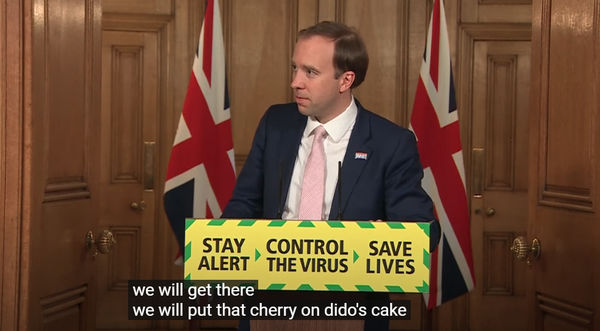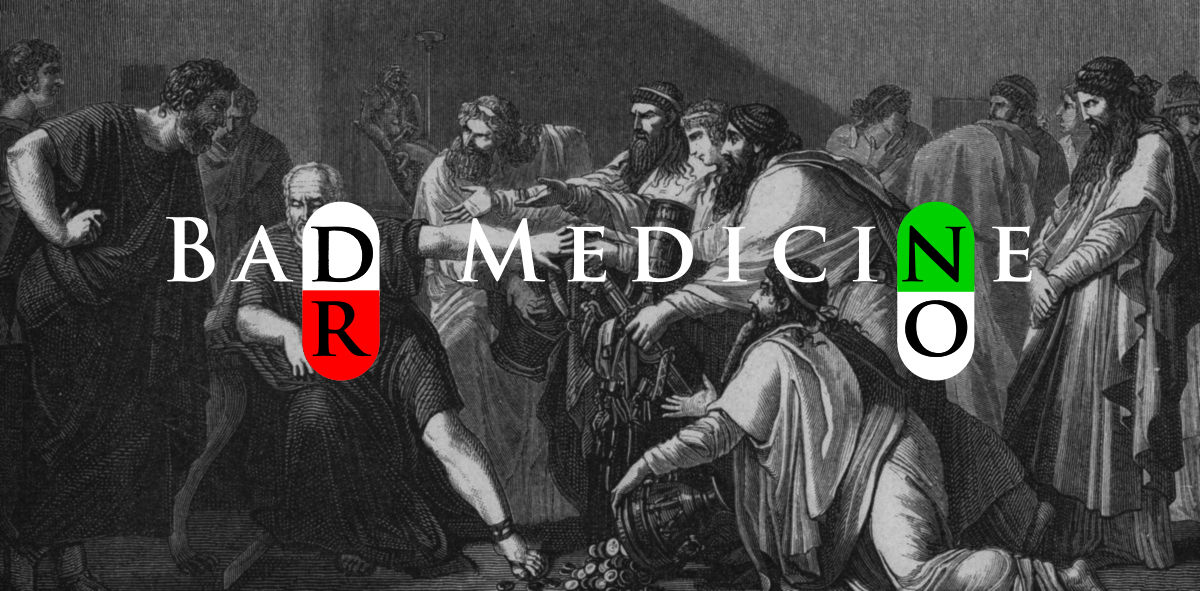Putting the Cherry on Dido’s Cake

‘I’m from Newmarket,’ said the man from Cheshire. What the man from Cheshire meant, of course, was that he was the honourable member for West Suffolk. Quite how being the MP for a constituency that was home to a renown racecourse came to explain the SoS for Health’s decision to ‘back both horses’ — that is, back both the failed NHSX and proprietary Apple/Google covid–19 contact tracing apps — escaped Dr No. But this was another episode of Hancock’s Half Hour, where anything goes. The very same episode, co-starring Test and Trace supremo and Bake-Off hopeful Baroness Dido Harding, and broadcast live in lieu of Thursday’s Downing Street covid–19 briefing, contained an enigmatic pledge to ‘put the cherry on Dido’s cake’. For a brief moment Dr No was magically transported back to the infamy of an Up Pompeii! aside, until he crashed back to June 2020 and the realisation that he was instead witnessing yet another official litany of covid-19 failings delivered in tractor production is up packaging.
To recap: the NHSX contact tracing app has gone from being a world class only horse in town to being a dud in a dead horse race, Dido’s half-baked cake — the manual arm of NHS test and trace — remains half-baked, and one day there will be a cherry — a covid–19 app — for the half-baked cake, but no one knows when. In short, the whole covid–19 test and trace scheme, the very scheme to get us out of lockdown, is in tatters. The open question is: how much of this is structural, in that it is inherent to contact tracing, and how much of it is down to poor execution, in that it is a failure of executive office.
Both Harding and Hancock certainly have form. Harding, a retired jockey with a sideline in business mayhem, an anti-NHS MP husband, and a recent track record of having one of the largest UK IT data breaches happen on her watch is a curious choice for an NHS service intended to demonstrate world class IT. Hancock’s record speaks for itself, from the PPE fiasco, through the testing shenanigans, to dumping hospital bed-blockers on unprepared care homes. Add in the horseplay, and the half baked cakes and absent cherries, and we might easily conclude that the failings are all to do with those at the top.
Certainly Harding and Hancock are part of the problem, but perhaps they are not all of the problem. Let us consider contact tracing itself, as a way of managing a covid–19 outbreak, or rather outbreaks, given that contact tracing is mostly a local activity, unless and until a contact moves out of the locality. Is it structurally up to the job?
The Independent Sage group certainly think so. To hear them talking, you might think contact tracing is the only game in town. WHO, with its test-test-test mantra also put great weight on contact tracing. None of this is surprising, given that contact tracing has a long and established history of successful use in managing infectious diseases. Control of HIV, tuberculosis, and even it has been suggested the eradication of smallpox, owe much to contact tracing. Though labour intensive in the extreme, it is, in its usual manual form, remarkably low tech, and so, given enough tracers, very doable.
But there are three major caveats. The first is that contact tracing is best suited to what we might call slow moving infections, like TB, or ones where the relevant contacts are usually well defined, like HIV. Fast moving infections, like covid–19, can very easily become a ‘race to trace’, and end up piling Pelion’s contacts on Ossa’s index case, leaving the tracers facing a Sisyphean challenge. Reports of shambolic army of 25,000 contact tracers being ‘paid to watch Netflix’ does not bode well…
The second but is the quality of the diagnostic test. Dr No has previously shown that the current RT-PCR test used to confirm infection is far from perfect, with significant numbers of false positive and negative results. The numbers of these wrong results, which lead to unnecessary quarantine and covid-19 trojans being given the all clear, go up fast when the test — which is not for the faint-hearted is self-administered. Dr No was unable to find a reliable report of the current number of self-administered tests, but figures from late April suggest around a quarter to a third of tests relied on DIY home testing, and a good many drive through and local testing centres also use self administered tests. It is not unreasonable to suppose that half or more of tests are DIY tests, and a good many of them will be, if not a poke in the eye, then little better than a stab in the dark. This does not bode well…
For those who wish to do so, this website provides a way to see how lower true positive (sensitivity) and true negative (specificity) rates affect the numbers of false results, depending on prevalence. Use the middle (disease prevalence, test sensitivity, test specificity and sample size) of the three input tables and press ‘Compute’, and a display will appear on the right of the screen showing the true/false positive/negative numbers.
The third caveat is that participation in the process is voluntary. This is how it should be, but it raises the possibility that significant numbers of people will choose, for any or all of a number of reasons, not to get involved. The consequences of becoming an ‘official’ case are not trivial. Harding’s own recent admissions that manual contact tracing remains half baked (though still just about in the oven) and the effective relegation of the digital app to the status of an aspirational cherry suggest a service that isn’t yet ready for prime time, and some will ask, quite rightly, why should I get involved in a half baked scheme? If large numbers of potential cases decide not to sign up, that does not bode well…
Contact tracing isn’t inherently flawed, and the time may come when it is the best way to control covid–19. But for the time being it is significantly compromised. The risk of a pile up in the race to chase, the reliance on a far from perfect diagnostic test, and the inevitable reticence of citizens to embrace a half baked service all for now conspire to lead Dr No to believe the glass of good cheer by the half baked cake is half empty rather than half full. Hancock may be a betting man, but Dr No is not, and has no plans to bet on the runners in this Donkey Derby any time soon.
